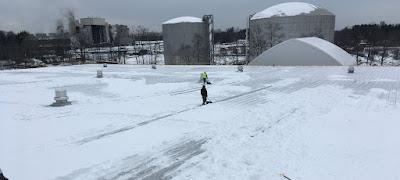What kind of building benefits most from structural monitoring? While the easy answer would be “all buildings,” the truth is that some structures are exposed to more vulnerability than others. Here are some factors to consider:
Size: You’ve likely heard “The bigger they are, the harder they fall” before; this saying holds true for construction. Large public buildings benefit significantly from monitoring because the costs will be greater if something goes wrong—and there are more areas where something could indeed go wrong. Schools, hospitals, sports stadiums, cinemas, hotels, and museums are all good candidates for structural monitoring, among many other types of facilities.
Climate: Many structural monitoring buildings are utilizing this technology for one core reason: snow loads. Since accumulated snow puts roofs at such a high risk of failure, property owners often invest in monitoring to avert that specific disaster. However, even buildings that never see snow will benefit from monitoring.
Number of Residents: The more people that occupy a building, the higher the stakes are. Any large residential building like apartment complexes, condominium complexes, and long-term nursing facilities should invest in structural monitoring. The potential loss of human life is simply too high not to utilize a robust monitoring system.

No comments:
Post a Comment